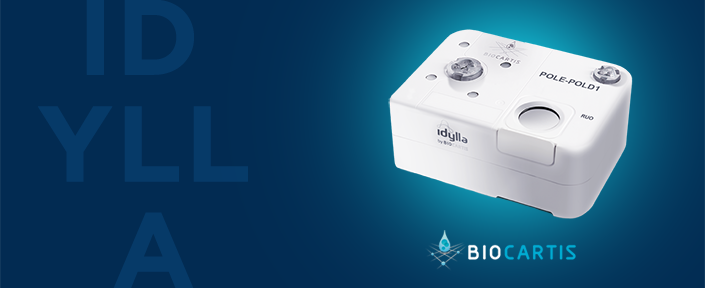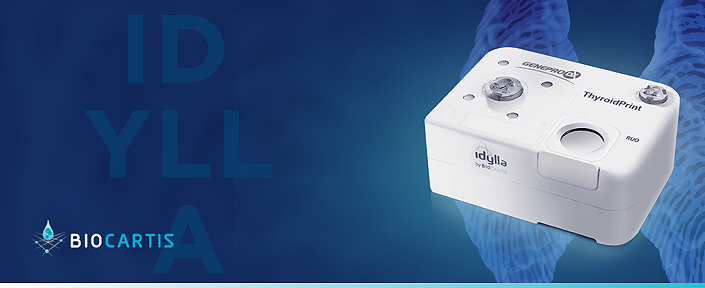NECTIN4 | MALT1/IGH | TNFRSF14/1q25 | PLAG1
All new ZytoLight SPEC probes listed below are for research use only (RUO)
ZytoLight® system uses direct-labeled FISH probes, which eliminate the need to detect the probes with fluorophore-coupled antibodies. ZytoLight products are designed for the identification of genetic aberrations e.g. translocations, deletions, amplifications, and chromosomal aneuploidies by Fluorescence in situ Hybridization (FISH) in formalin-fixed, paraffin-embedded (FFPE) tissue sections or cytology specimens.
NECTIN4/1p12 – Dual Color Probe (Prod. No. Z-2331-50/-200)
ZytoVision is the first company to launch an IVDR FISH probe for the detection of NECTIN4 amplifications!
The intended purpose of this probe is the qualitative detection of amplifications involving the human NECTIN4 gene as well as the detection of chromosome 1p12 specific sequences in formalin-fixed, paraffin-embedded specimens by fluorescence in situ hybridization (FISH).
This probe is an in vitro diagnostic medical device according to IVDR (EU) 2017/746.
Amplifications of the NECTIN4 gene are found in numerous solid tumors, most frequently in bladder cancer (17%; approximately 25% in metastatic urothelial carcinomas), cholangiocarcinomas (14%), and hepatocellular carcinomas (12%). NECTIN4 amplifications also occur in very common tumor types such as breast cancer and lung adenocarcinomas, with frequencies of 9% and 7%, respectively.
In 2019, the U.S. FDA approved the anti-Nectin-4 antibody-drug conjugate enfortumab vedotin for patients with metastatic urothelial carcinoma; the EMA followed with approval in the EU three years later. NECTIN4 amplification serves as a biomarker with high predictive value (response rate > 90%) for responsiveness to enfortumab vedotin.
Currently, Nectin-4 is also being discussed as a potential prognostic biomarker and/or therapeutic target for breast cancer, lung cancer, and various other solid tumors, and is being analysed in a number of clinical studies.
Download the ZytoLight SPEC NECTIN4/1p12 Flyer
MALT1/IGH – Dual Color Dual Fusion Probe
The intended purpose of this probe is the qualitative detection of the translocation t(14;18)(q32.3;q21.3) involving the human MALT1 gene at 18q21.32 and the human IGH locus at 14q32.33 in formalin-fixed, paraffin-embedded specimens by FISH.
The MALT1/IGH fusion is a genetic rearrangement in which the MALT1 gene (which is involved in immune signaling) fuses with the IGH gene. This fusion results in the overexpression of MALT1. Detecting MALT1/IGH fusions is particularly useful in cancer diagnostics because the translocation t(14;18)/MALT1-IGH, along with the translocations t(11;18)/BIRC3-MALT1 and t(1;14)/BCL10-IGH, are specific to MALT lymphoma (a.k.a extranodal marginal zone lymphoma of mucosa-associated lymphoid tissue). Thus, detecting this fusion can serve as a diagnostic biomarker for MALT lymphoma by helping pathologists differentiate it from other types of lymphoma or lymphoid tumors.
Download the ZytoLight SPEC MALT1/IGH Flyer
TNFRSF14/1q25 – Dual Color Probe
The intended purpose of this probe is the qualitative detection of human TNFRSF14 gene deletions and 1q25.3 specific sequences in formalin-fixed, paraffin-embedded specimens by fluorescence in situ hybridization (FISH).
Follicular lymphoma (FL) is a morphologically and genetically well-characterised B-cell non-Hodgkin lymphoma. Approximately 85% of FLs harbor the translocation t(14;18)(q32;q21), involving BCL2 and IGH, and consistently display a follicular growth pattern. However, some FL cases lack, partly or completely, this follicular organisation. The hallmark translocation of FL, the t(14;18)(q32;q21), is absent in the large majority of these diffuse FL cases. Instead, most diffuse FL cases harbour a deletion in the 1p36 locus, in which the TNFRSF14 gene is located. FL with 1p36 deletion shows distinctive clinical, morphological and molecular features that distinguish it from classical FL.
This probe is often requested in tenders and was developed to meet these requirements.
Download the ZytoLight SPEC TNFRSF14/1q25 Flyer
PLAG1 – Dual Color Break Apart Probe (Prod. No. Z-2326-50)
The intended purpose of this probe is the qualitative detection of rearrangements involving the human PLAG1 gene at 8q12.1 in formalin-fixed, paraffin-embedded specimens by fluorescence in situ hybridization (FISH).
Pleomorphic adenoma (PA) is the most common salivary gland neoplasm, accounting for approximately 60% of all epithelial salivary gland tumors. PA and carcinoma ex pleomorphic adenoma (CA ex-PA) can mimic various benign and malignant salivary gland tumors.
PLAG1 gene rearrangement is the most common genetic abnormality in PA, resulting in overexpression of PLAG1 protein. It appears to be highly specific for PA and CA ex-PA as it has not been detected in other benign or malignant salivary gland neoplasms.
In the clinical setting, analysis of PLAG1 rearrangement can aid in differentiating between PA/CA ex-PA and its mimics.
Additionally, PLAG1 alteration has been reported in other cancer types, e.g. in lipoblastomas, which are benign fatty tumors typically occurring in infants and young children. Detection of PLAG1 rearrangement can help in distinguishing lipoblastoma from other liposarcomas or soft tissue tumors.
Download the ZytoLight SPEC PLAG1 Flyer
THESE PRODUCTS ARE NOT AVAILABLE FOR PURCHASE BY THE GENERAL PUBLIC.
Request a Quote








